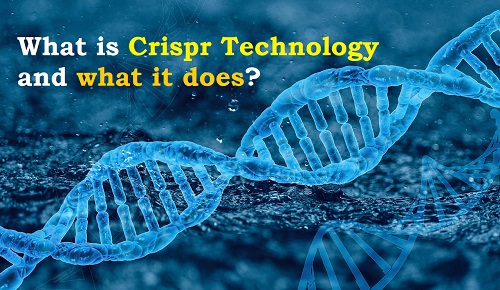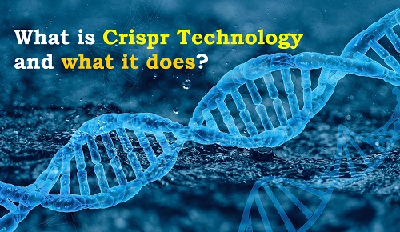Imagine a world where parents don’t have to worry about their child suffering from certain genetic diseases or disorders because they can fix it before the baby is even born. It might sound like science-fiction, but it’s closer than you think.

What is Crispr and how does it work?
Crispr is a new gene editing technique that is rapidly gaining popularity due to its efficiency and precision. But do you know exactly what is Crispr and how it works?
Crispr stands for Clustered Regularly Interspaced Short Palindromic Repeats. These are short sequences of DNA that are found in the genomes of many bacteria and archaea. The Crispr system consists of two parts: the Cas9 protein and the guide RNA.
The guide RNA contains a sequence that complementary to the target DNA sequence that you want to cut. The Cas9 protein uses this RNA as a guide to find and bind to the target DNA. Once bound, Cas9 uses its enzymatic activity to cleave the DNA at the desired location.
This system can be used for a variety of different applications, including genome editing, disease diagnosis, and even cancer therapy.
Who discovered Crispr?
Crispr was discovered in 2012 by a team of scientists led by Jennifer Doudna at the University of California, Berkeley.
How long has CRISPR been around?
CRISPR (Clustered Regularly Interspaced Short Palindromic Repeats) is a naturally occurring prokaryotic defense mechanism that provides immunity against bacteriophage infections. CRISPR was first discovered in 1987 by Japanese researchers Yoshizumi Ishino and colleagues. However, it wasn’t until 2012 that scientists began to harness its potential for use in genome editing. So in just a few short years, CRISPR has gone from being a relatively unknown prokaryotic defense mechanism to one of the most exciting and promising tools in the field of genetic engineering.
How accurate is CRISPR?
Since its inception, the CRISPR-Cas9 system has been lauded for its accuracy. Indeed, compared to earlier gene-editing techniques, CRISPR is much more precise.
However, a new study has called into question just how accurate CRISPR really is. Researchers found that the system can introduce unintended mutations at a rate of approximately one in every 100 cells edited.
While this may not sound like a lot, it could have serious implications for any therapeutic applications of CRISPR. After all, even a small number of mutations could potentially have harmful effects.
So far, there is no evidence that CRISPR-edited cells have caused any harm in clinical trials. But as the technology continues to be developed and used more widely, it’s important to keep an eye on its accuracy.
What is the future of the technology?
Crispr is a new technology that allows for very precise editing of genes. This could potentially be used to correct diseases or to improve crops. The possibilities are endless and the potential for this technology is very exciting.
Ending
Crispr is a powerful new gene editing tool that is already changing the way we do science. With Crispr, we can make precise changes to DNA and improve our understanding of how genes work. This technique also has the potential to treat genetic diseases and could even be used to create custom organisms for specific tasks. As we continue to learn more about Crispr and how it works, we are sure to make even more amazing discoveries that will change the world as we know it.
